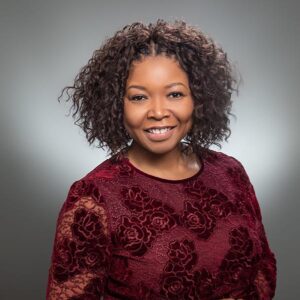Corliss Garner joined First Midwest Bank in 2019 as head of social responsibility, diversity, equity and inclusion, tasked with creating an inclusive workplace for 2,200 employees. But in February 2022, her company became a division of financial services firm Old National Bank. Now Garner has a new mandate: overseeing the DE&I efforts for 4,000 employees as the company’s first chief diversity, equity and inclusion officer.
“My job [when I joined First Midwest Bank] was to really develop our DE&I strategy…and scale it across the company,” Garner says. “[Now,] it’s taking the best of what we’ve done at First Midwest, the best of what they’ve done at Old National…then moving us forward as a new company, because we are coming together as a new company.”
Post-merger, Old National Bank serves customers across seven states and oversees 250 banks. Garner’s next priorities are to understand the merged company’s workforce data and figure out what gaps need to be closed.
During an exclusive conversation with Senior Executive Media, Garner revealed what challenges she expects to confront post-merger, her new priorities and more. Read the edited conversation.

I have to start from the beginning to understand our data and what our workforce composition looks like now that we’re a merged organization…
Corliss Garner, Chief Diversity, Equity and Inclusion Officer at Old National Bank
Senior Executive: What are some big decisions you expect to confront now that you are managing a merged workforce?
Corliss Garner: There’s a new executive leadership team that comes with the new merged company. I’m really excited about spending time with them to help them understand where our opportunities are, what strategies we will move forward and the role that they can play in advancing the work there. How do we embed DE&I into all of these areas of the new company? That’s what I’m really excited about.
Our data is going to change. We’re no longer First Midwest. We’re a combined Old National Bank. In a lot of ways, I have to start from the beginning to understand our data and what our workforce composition looks like now that we’re a merged organization, figure out where those gaps are, and think about strategies that we can put in place to close those gaps. The good thing is, the companies are very similar in a lot of ways. There was work there for sure. Some work had been done on diversity, equity and inclusion. So I think it’s not a fresh start. It’s just a bit of a reboot.
The other part of the work is about defining our culture, and what are our new values. And how do we embed inclusion in our values and lead with that as a new company. That’s work that we’re engaging in now, to really just set the tone and the stage for who we will be as the new Old National, and the role that diversity, equity and inclusion plays in it.
Quiz: Execs, Test Your DEI IQ
Senior Executive: What’s your DE&I strategy?
Corliss Garner: The way that I approached even thinking about our strategy was from a place of learning, spending time with leaders and employees and learning about the culture and the practices in the organization. My first 90 days in office, I met with our executive leadership team to hear their perspectives on our strengths and areas of opportunities. Those conversations provided consistent themes and helped me initially focus my efforts on elevating the language of DEI across our organization. We started with acknowledging heritage months and other observances to help our employees build their cultural competency. We also engaged our executive leaders in these communications to reinforce their commitment to this work.
[I’m] also looking at our workforce data, which tells us what we’re doing well, and where we have gaps and opportunities. Analyzing our data helps us understand where we could better support the career progression of our diverse talent. That led to us providing a series of learning experiences for our people leaders on the topic of bias and decision making. We are also leveraging development programs focused on addressing the needs of diverse talent. While we are early in our journey, we anticipate these strategies will result in increased opportunities for more diverse representation in senior roles.
Senior Executive Media: What are examples of progress you’ve made at First Midwest?
Corliss Garner: Some of the things that you will be able to see probably in shorter order are around the culture. Are there opportunities to build a more inclusive culture? And what are some of the things that we can do to advance that inclusive culture around learning about differences, around providing your employees opportunities to learn about each other? And to define what it means to be inclusive in your organization and put those into practice.
[For example,] we began to offer up learning experiences at the beginning of 2021 around topics like racism and allyship, and what does it mean to be an inclusive leader. We opened that space up to all of our employees, and we had amazing attendance. Well over 60% of our employees attended those sessions live. And then we made those sessions available in a recorded fashion for others to join when they could, but we really opened up the space to have conversations about these topics that you don’t typically hear about in corporate America. What we found as a company is that it provided the license and the opportunity for our colleagues to really talk to each other and learn about different cultures…which created better working relationships which leads to a more inclusive culture…
We also worked with all our people, leaders, anybody who managed a team, and had them go through a learning experience around unconscious bias and decision making. And that’s an important topic because people leaders really do drive a lot of what happens in a company, and we want to equip our people leaders to be top notch leaders and that includes being an inclusive leader.






